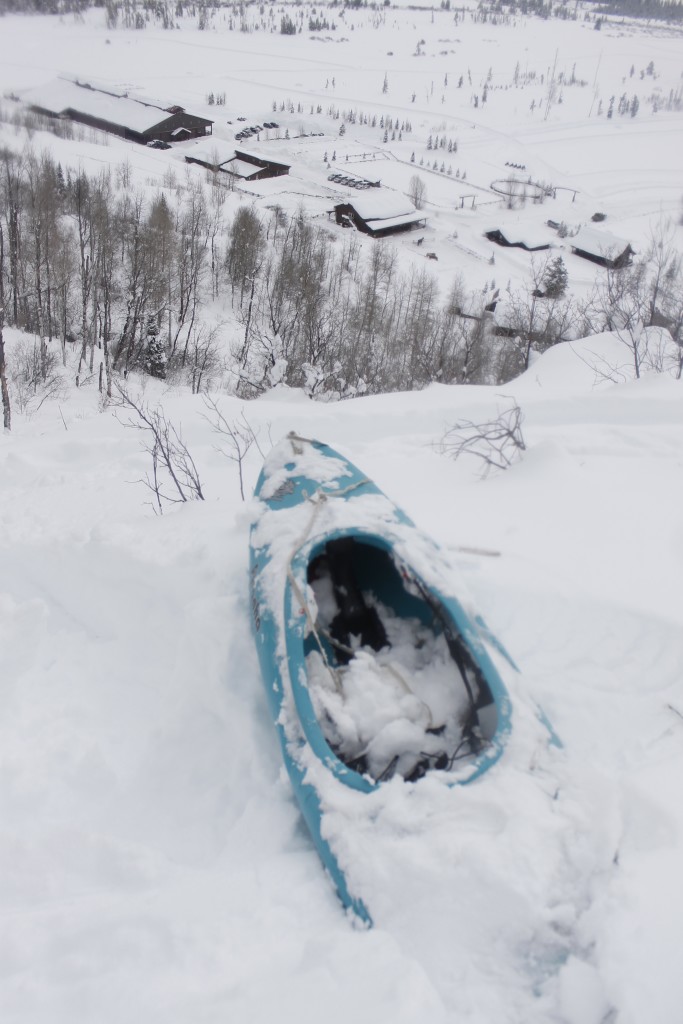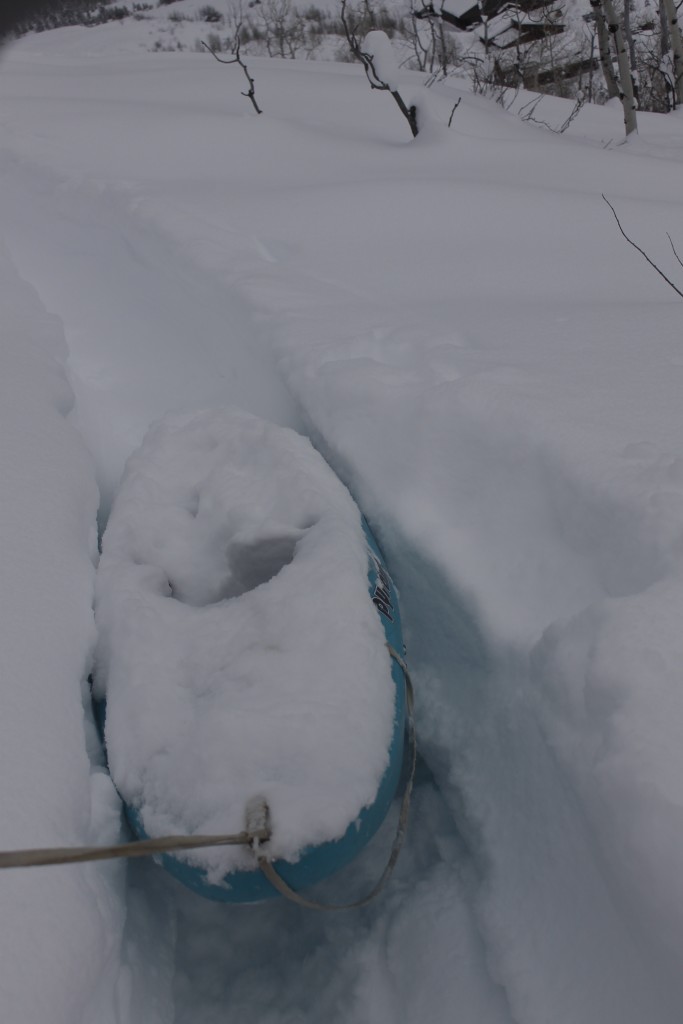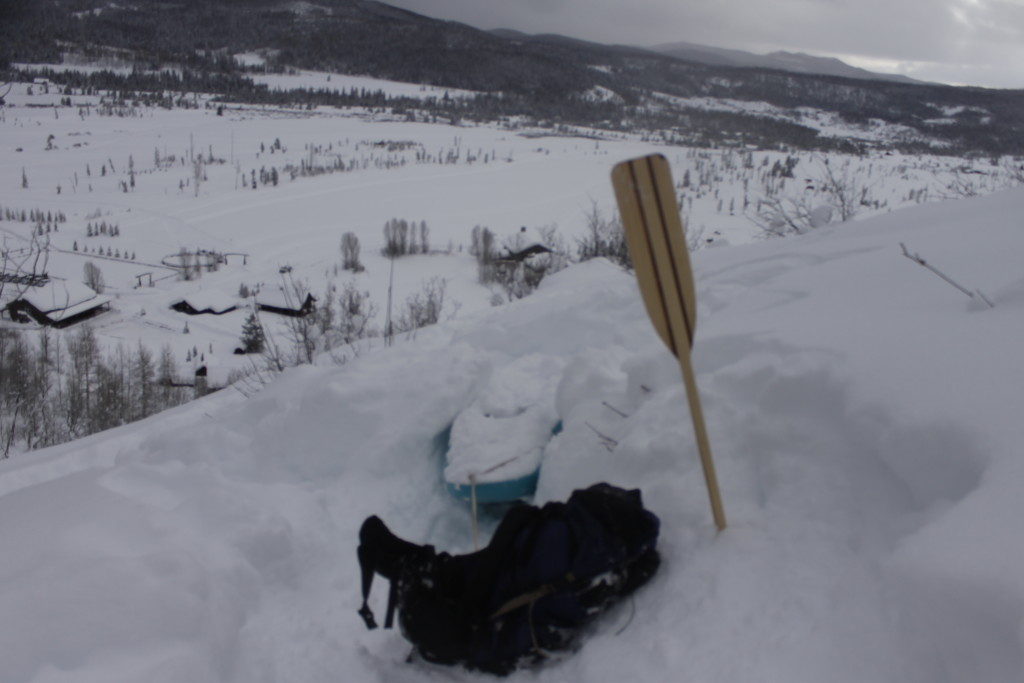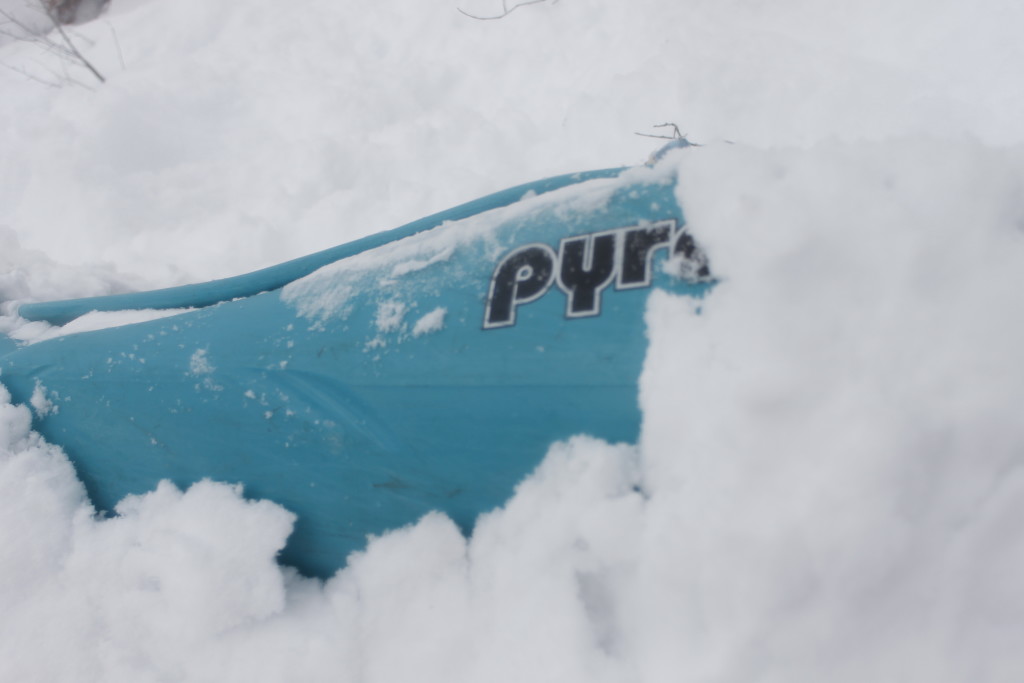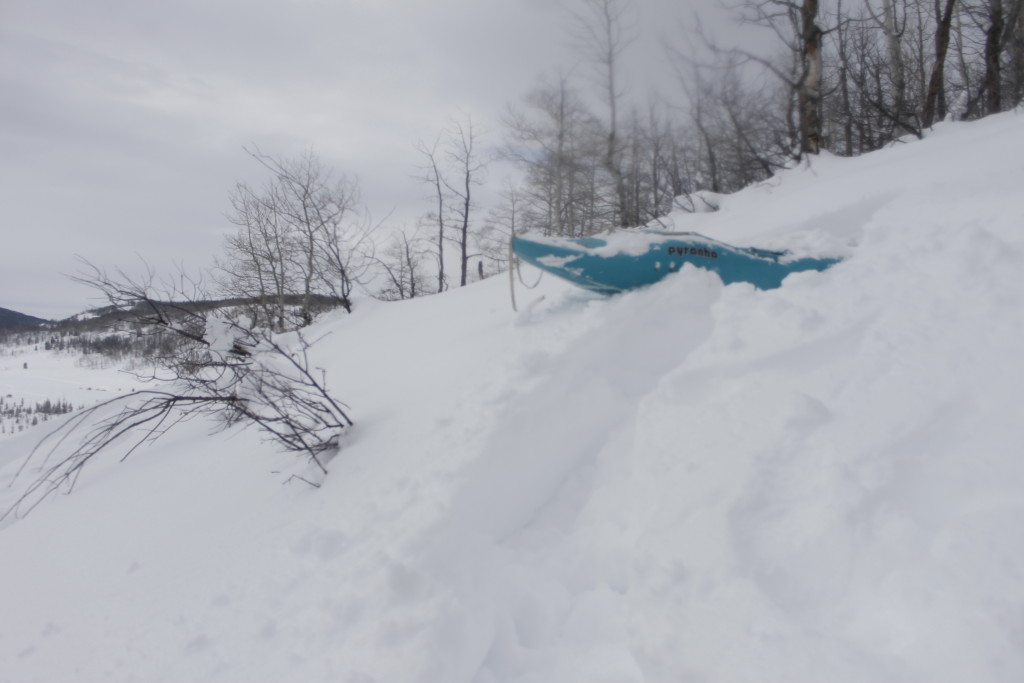Bicycle
As I wheeled my road bike out onto the street to start my doorstep adventure, I could still see margins of frost on the north face of the neighbor’s roof. Soon the frost would retreat as the sun continued its climb. Higher up, fields of bright white snow filled the bowls and couloirs of Klahanne Ridge. It would stay white up there a while longer.
Yet, the expanse of frozen waste and toothy crags could be mistaken for mere background decoration to the fresh green day that was unfolding in Port Angeles — a glory of spring warmth complete with chirping birds, blossoming cherry trees fresh cut lawns, and the earthy smell of living organisms crawling out of winter sleep.
The disparate scenes were separated by several miles and a couple thousand feet of elevation. Today’s adventure was about closing that gap.
By biking, then hiking and finally snowshoeing up the ridge, I would feel the challenge of the mountains while taking the chance to connect with their snowy realm.
There was a mighty pack on my shoulders, flanked by powder snowshoes and a trekking pole/ice axe. It didn’t take long for that weight to feel uncomfortable on my spine. In the best case scenario, I imagined that I would be able to traipse across 6,000-foot Klahhane Ridge itself. I had ran up there from Port Angeles while training for my ultra marathon last summer. With deep snow in the equation however, the task wouldn’t be so simple. Avalanche forecasts called for elevated risk of slides, especially above tree line. I remembered encountering harsh slopes on my summer runs, which could be hazard zones. If nothing else, I knew I could travel to 5,000 feet or so and get amazing views.
I biked out of the neighborhood past the National Park Headquarters and onto Hurricane Ridge Road. There would be five miles of uphill biking to the Heather Park Trailhead at 1,800 feet.
I ground through the miles, weeping for my aching back. Cars swept up and down easily past me. Why do I have to make everything so hard?
Sometimes I brought my head up to appreciate the endless pavement view in front of me. Mostly I watched the little twigs and bits of gravel creep by my tires. There was progress, at least in the small scale.
Shoes
I made it to the trailhead parking lot by 10:20 a.m., and locked my bike against a sapling.
Other hikers were loading and unloading themselves into vehicles. Most of them, I guessed, were going up the more popular Lake Angeles Trail.
Still, I was in no mood to get caught up in another group of walkers. I was loaded too heavily to run, but managed an aggressive walk up the smooth grade of dead pine needles. At this elevation, the evergreen salal and Oregon grape shrubs grew in abundance. Big leaf maples with mossy limbs still found niches between western red cedar and the Douglass fir. After a few switchbacks, the maples would fall behind and the scrub would disappear.
An hour of climbing switchbacks brought me to the first dabs of icy snow up in the trees. They fell in a barrage of hard little pellets as the sun loosened their grasp upon the branches. Within a hundred yards, a hard-crusted, slippery snow firmed over the trail, dusted with a fine layer of powder. Hikers who had gone before had already worn some indents into the crust which were useful to prevent sliding. I thought of my snowshoes, but decided to wait until I encountered snow that I might sink into.
The more I climbed, the trickier travel on the crust became. The trail traversed the mountainside, but not enough people had been through to notch it out. The result: My feet constantly slid out to the left. Snowy branches above the trail waited for me to brush against them so they could dump their payload down my neck.
I could have protected myself by putting my rain jacket on. Some gaiters for my legs would have been nice too. I also wanted to eat lunch. Still, I knew the transition would take time and I didn’t want to stop for all of that, only to have to stop again and take my snowshoes out — or peel a layer off because I was sweating. I wanted to be in the place where I could do all those things, and I wanted it to be in the warm sun.
There had been one lookout that I had been saving up for. Yet, when I passed it, I saw that it was shaded, and that clouds had moved in below to rob me of the view I’d wanted. I kept going until I found a random patch of sun in the trail where I threw my pack off.
Sun or no sun, the cold found me immediately. The rain jacket and parka I threw on were little help to my cooling metabolic furnace. My hands immediately became dumb blocks of frozen meat. Still, I took my mini show shovel out to dig a small indentation in the slope where I could put a sitting pad.
Lunch included some bread heels and hummus, along with a not-too-bad vegan banana brownie I’d made for myself the other day.
Having tossed fuel back into the furnace, it was time to winterize myself. I had decided to go light on my feet, and was only wearing running shoes — not designed to withstand cold, wet snow. But I would make them honorary winter boots. I put plastic bags around my socks to keep water out, then strapped my gaiters on for reinforcement at the ankles. I brought out my ice axe/pole for additional support on the tricky terrain. Finally, I got my snowshoes on and hefted up my pack.
These relatively straightforward tasks were made far more onerous by numb hands that I had to rewarm with body heat several times in the course of my work. I cursed and struggled several minutes trying to get them into warm mittens, pulling with my teeth.
Forty-five minutes had passed between when I stopped for my break and when I started back up the trail.
Snowshoes
Putting snowshoes on was no magic bullet for making the slippery crust terrain more navigable.
I still would slide violently to the left sometimes on the thin powder layer. The spikes on the snowshoes worked best if I were going straight up or down, but the rounded edges afforded little help on the tilt-a-trail. A pair of smaller mountaineering shoes may have been a better ticket.
Having the pole/axe in my hand, did help here and there for certain maneuvers.
I saw the last section of footprints end in a series of postholes. Then I was the one making tracks. Several times I walked sideways because the snowshoes engaged pretty well that way. The constant sliding was jarring though, and I was getting frustrated.
Now and then I would walk straight up the hill off the trail and then cut back over along the edge of a tree well, where the snow was slightly easier to navigate.
During one of these maneuvers, I realized that I’d lost sight of the trail. I half-heartedly searched for it and realized that I didn’t particularly care. I had my tracks to follow and it wasn’t going to snow anytime soon. My slow progress meant that there was no way I was going to make Klahhane Ridge. There was an adjacent, shorter ridge below First Top, a 5,500 foot peak that I could reach by hiking straight up. Seeing that the snowshoes actually did well climbing straight uphill, I decided that this was a course worth pursuing.
There were several helpful cuts in the trees that I could take. As the going got steeper, I found myself swing kicking my snowshoes into the slope for traction, and sometimes climbing over crust ledges. These would take a while because my feet would routinely slide out under the substrate and I might have to kick in several times to get a real foothold. A lot of the sunny areas included crumbly corn snow that gave out easily. The axe would slide right through it without grabbing anything, so I would slam my hands in and pull myself up. I grabbed tree branches when available.
Just when I was beginning to feel like a grubbing animal, a break in the clouds revealed the Dungeness Spit, which jabs five miles out into the Strait. Meanwhile, Klahanne Ridge loomed big as ever behind me. Enormous snow bowls rose up between blades of rock. White wisps of cloud curled off the ridge, while much darker clouds lurked behind — malevolent and full of power.
So much snow everywhere, I thought. If I flew for 50 miles south above the Olympics, no doubt I would see more snow than bare ground. It made me think of my home where I had started and how springtime with its flowers and cut lawns only really existed on a thin strip above the water. These mountains felt more like the true character of the peninsula.
A recent slide had left a run of broken cheddar snow to my left. The slide was shallow, but ran for about a 75 feet down the snowfield, a reminder to stay alert. I chose to avoid a obvious climb up a steep, clear slope by staying in the protection of a downed tree, and then doing a weird, rock climbing/snowshoeing move to get to the top of another ledge.
The slope became more gradual, then I got to where I could see down the other side.
Mount Fitzhenry rose up beyond the Elwha River Valley. The tallest peaks I could see on Vancouver Island were below me, but were still high enough to hold snow. The top of First Top was maybe a quarter mile away, but only by going through a gnarly looking traverse. I decided that I was happy with the view.
Looking back down, I could see Freshwater Bay and Bachelor Rock where I had some fun times kayak surfing earlier this year. Bachelor Rock appeared disconnected to the mainland, so I ascertained it was high tide. And perhaps it was high time that I started heading back to Port Angeles. It was 3 p.m. and there was plenty of sun left, but I didn’t want to get cocky.
Ducking into the shelter of some rocks, I put my parka back on, and worked my snowpants on over my shoes (couldn’t have pulled this move if I’d been in boots.) I was glad for the extra layers, because I was sure to be colder on the way down. After one more look at my surroundings, I began the descent.
Glissade, Run, Ride
Having struggled to find footing on the way up, I had dreaded what the descent had in store for me. Sure enough, my snowshoes soon went out from under me.
As I sat with my butt on the snow, I realized that I was going to be just fine. I could slide down the mountain on my butt quickly and easily in a glissade. The snow pants, which I had thrown into my pack as an afterthought, were now going to be a saving grace. No way would I sit on the snow in thin wind pants up here.
My pole/axe, like the snow pants, was finally proving its worth. The pitches I was sliding down were quite steep. Yet, by holding the pole across my chest and digging the axe head into the crust I could moderate my speed.
Well, mostly.
I lost control a couple times and got swallowed in tree wells beneath Alaska yellow cedars. I kicked off the branches with my snowshoes, crawled away and got in place for another run.
Slide after slide, I ripped down the mountain. A big grin stretched across my face. I realized I was finally having some fun.
When I got back to the trail, I alternated between awkward snowshoe steps and crawling over the crust. If I fell, I just went with the momentum. I felt like a lurching bear, allowing myself to be not-quite in control. Further down, the snow became flatter and I started running.
In a couple places, I glissaded over some switchbacks, but the snow was getting dirtier and sharper as I went down. Melting snow felt like rain off the needles overhead. I snowshoed over crud snow and ice until I got to bare ground and took the shoes off.
I started running again. The pack was lighter now, and the downhill momentum made for a good push. I kept my knees slightly bent to protect them from trauma and put it all on my quadriceps.
The salal and Oregon grape reappeared. By the time I reached my bike, it had only been two hours since I had left the ridge.
There was a short flat section before the downhill descent. I swung into a highway pull out above Port Angeles, and looked northeast. The air was extraordinarily clear, affording me a view of the San Juan Islands and 10,000-foot Mount Baker. Even further north, I could see the white peaks of the mountains near Whistler, Canada.
It is worth mentioning that I tested my brakes before the final descent on Hurricane Ridge Road. It turned out the back back brake was loose. Resetting it was a simple matter. I just flicked a lever back into place. The lessons of last month’s wipeout are still with me, even if the cuts have faded.
I spun the pedals around so that my feet were on the rough sides, kicked off, and started down the road.
Twenty -five minutes later, I was back to my doorstep. The late day light played across the valleys of Klahanne Ridge where the snow still held rein. Those were mountains — not some pretty background decoration from the kitchen window.
As winter retreats up the slopes, I know I will have to spend more time up there.

